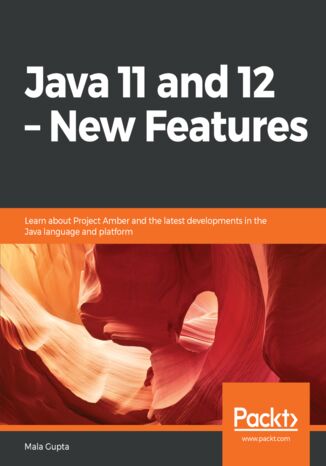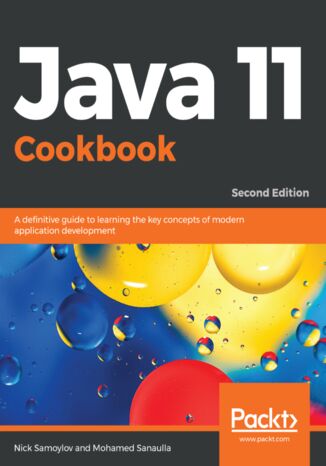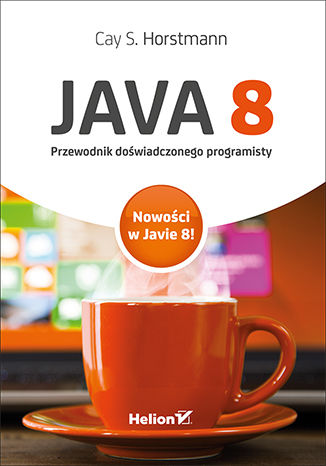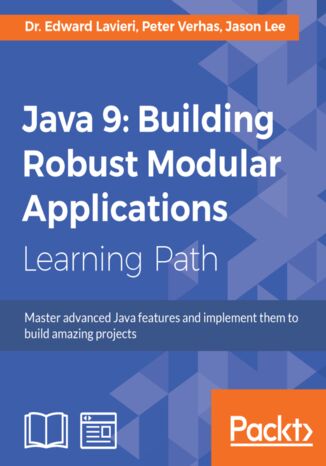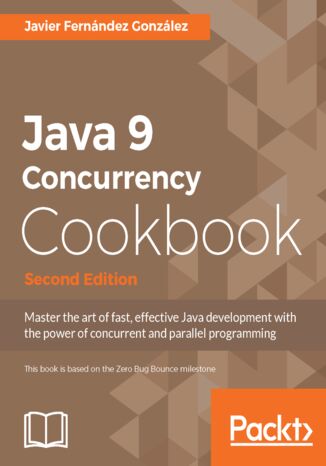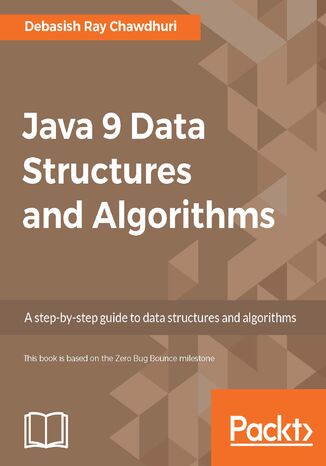Категорії
Електронні книги
-
Бізнес та економіка
- Біткойн
- Ділова жінка
- Коучинг
- Контроль
- Електронний бізнес
- Економіка
- Фінанси
- Фондова біржа та інвестиції
- Особисті компетенції
- Комп'ютер в офісі
- Комунікація та переговори
- Малий бізнес
- Маркетинг
- Мотивація
- Мультимедійне навчання
- Нерухомість
- Переконання та НЛП
- Податки
- Соціальна політика
- Порадники
- Презентації
- Лідерство
- Зв'язки з громадськістю
- Звіти, аналізи
- Секрет
- Соціальні засоби комунікації
- Продаж
- Стартап
- Ваша кар'єра
- Управління
- Управління проектами
- Людські ресурси (HR)
-
Для дітей
-
Для молоді
-
Освіта
-
Енциклопедії, словники
-
Електронна преса
- Architektura i wnętrza
- Безпека життєдіяльності
- Biznes i Ekonomia
- Будинок та сад
- Електронний бізнес
- Ekonomia i finanse
- Езотерика
- Фінанси
- Особисті фінанси
- Бізнес
- Фотографія
- Інформатика
- Відділ кадрів та оплата праці
- Для жінок
- Комп'ютери, Excel
- Бухгалтерія
- Культура та література
- Наукові та академічні
- Охорона навколишнього середовища
- Впливові
- Освіта
- Податки
- Подорожі
- Психологія
- Релігія
- Сільське господарство
- Ринок книг і преси
- Транспорт та спедиція
- Здоров'я та краса
-
Історія
-
Інформатика
- Офісні застосунки
- Бази даних
- Біоінформатика
- Бізнес ІТ
- CAD/CAM
- Digital Lifestyle
- DTP
- Електроніка
- Цифрова фотографія
- Комп'ютерна графіка
- Ігри
- Хакування
- Hardware
- IT w ekonomii
- Наукові пакети
- Шкільні підручники
- Основи комп'ютера
- Програмування
- Мобільне програмування
- Інтернет-сервери
- Комп'ютерні мережі
- Стартап
- Операційні системи
- Штучний інтелект
- Технологія для дітей
- Вебмайстерність
-
Інше
-
Іноземні мови
-
Культура та мистецтво
-
Шкільні читанки
-
Література
- Антології
- Балада
- Біографії та автобіографії
- Для дорослих
- Драми
- Журнали, щоденники, листи
- Епос, епопея
- Нарис
- Наукова фантастика та фантастика
- Фельєтони
- Художня література
- Гумор, сатира
- Інше
- Класичний
- Кримінальний роман
- Нехудожня література
- Художня література
- Mity i legendy
- Лауреати Нобелівської премії
- Новели
- Побутовий роман
- Okultyzm i magia
- Оповідання
- Спогади
- Подорожі
- Оповідна поезія
- Поезія
- Політика
- Науково-популярна
- Роман
- Історичний роман
- Проза
- Пригодницька
- Журналістика
- Роман-репортаж
- Romans i literatura obyczajowa
- Сенсація
- Трилер, жах
- Інтерв'ю та спогади
-
Природничі науки
-
Соціальні науки
-
Шкільні підручники
-
Науково-популярна та академічна
- Археологія
- Bibliotekoznawstwo
- Кінознавство / Теорія кіно
- Філологія
- Польська філологія
- Філософія
- Finanse i bankowość
- Географія
- Економіка
- Торгівля. Світова економіка
- Історія та археологія
- Історія мистецтва і архітектури
- Культурологія
- Мовознавство
- літературні студії
- Логістика
- Математика
- Ліки
- Гуманітарні науки
- Педагогіка
- Навчальні засоби
- Науково-популярна
- Інше
- Психологія
- Соціологія
- Театральні студії
- Богослов’я
- Економічні теорії та науки
- Transport i spedycja
- Фізичне виховання
- Zarządzanie i marketing
-
Порадники
-
Ігрові посібники
-
Професійні та спеціальні порадники
-
Юридична
- Безпека життєдіяльності
- Історія
- Дорожній кодекс. Водійські права
- Юридичні науки
- Охорона здоров'я
- Загальне, компендіум
- Академічні підручники
- Інше
- Закон про будівництво і житло
- Цивільне право
- Фінансове право
- Господарське право
- Господарське та комерційне право
- Кримінальний закон
- Кримінальне право. Кримінальні злочини. Кримінологія
- Міжнародне право
- Міжнародне та іноземне право
- Закон про охорону здоров'я
- Закон про освіту
- Податкове право
- Трудове право та законодавство про соціальне забезпечення
- Громадське, конституційне та адміністративне право
- Кодекс про шлюб і сім'ю
- Аграрне право
- Соціальне право, трудове право
- Законодавство Євросоюзу
- Промисловість
- Сільське господарство та захист навколишнього середовища
- Словники та енциклопедії
- Державні закупівлі
- Управління
-
Путівники та подорожі
- Африка
- Альбоми
- Південна Америка
- Центральна та Північна Америка
- Австралія, Нова Зеландія, Океанія
- Австрія
- Азії
- Балкани
- Близький Схід
- Болгарія
- Китай
- Хорватія
- Чеська Республіка
- Данія
- Єгипет
- Естонія
- Європа
- Франція
- Гори
- Греція
- Іспанія
- Нідерланди
- Ісландія
- Литва
- Латвія
- Mapy, Plany miast, Atlasy
- Мініпутівники
- Німеччина
- Норвегія
- Активні подорожі
- Польща
- Португалія
- Інше
- Przewodniki po hotelach i restauracjach
- Росія
- Румунія
- Словаччина
- Словенія
- Швейцарія
- Швеція
- Світ
- Туреччина
- Україна
- Угорщина
- Велика Британія
- Італія
-
Психологія
- Філософія життя
- Kompetencje psychospołeczne
- Міжособистісне спілкування
- Mindfulness
- Загальне
- Переконання та НЛП
- Академічна психологія
- Психологія душі та розуму
- Психологія праці
- Relacje i związki
- Батьківство та дитяча психологія
- Вирішення проблем
- Інтелектуальний розвиток
- Секрет
- Сексуальність
- Спокушання
- Зовнішній вигляд та імідж
- Філософія життя
-
Релігія
-
Спорт, фітнес, дієти
-
Техніка і механіка
Аудіокниги
-
Бізнес та економіка
- Біткойн
- Ділова жінка
- Коучинг
- Контроль
- Електронний бізнес
- Економіка
- Фінанси
- Фондова біржа та інвестиції
- Особисті компетенції
- Комунікація та переговори
- Малий бізнес
- Маркетинг
- Мотивація
- Нерухомість
- Переконання та НЛП
- Податки
- Соціальна політика
- Порадники
- Презентації
- Лідерство
- Зв'язки з громадськістю
- Секрет
- Соціальні засоби комунікації
- Продаж
- Стартап
- Ваша кар'єра
- Управління
- Управління проектами
- Людські ресурси (HR)
-
Для дітей
-
Для молоді
-
Освіта
-
Енциклопедії, словники
-
Електронна преса
-
Історія
-
Інформатика
-
Інше
-
Іноземні мови
-
Культура та мистецтво
-
Шкільні читанки
-
Література
- Антології
- Балада
- Біографії та автобіографії
- Для дорослих
- Драми
- Журнали, щоденники, листи
- Епос, епопея
- Нарис
- Наукова фантастика та фантастика
- Фельєтони
- Художня література
- Гумор, сатира
- Інше
- Класичний
- Кримінальний роман
- Нехудожня література
- Художня література
- Mity i legendy
- Лауреати Нобелівської премії
- Новели
- Побутовий роман
- Okultyzm i magia
- Оповідання
- Спогади
- Подорожі
- Поезія
- Політика
- Науково-популярна
- Роман
- Історичний роман
- Проза
- Пригодницька
- Журналістика
- Роман-репортаж
- Romans i literatura obyczajowa
- Сенсація
- Трилер, жах
- Інтерв'ю та спогади
-
Природничі науки
-
Соціальні науки
-
Науково-популярна та академічна
-
Порадники
-
Професійні та спеціальні порадники
-
Юридична
-
Путівники та подорожі
-
Психологія
- Філософія життя
- Міжособистісне спілкування
- Mindfulness
- Загальне
- Переконання та НЛП
- Академічна психологія
- Психологія душі та розуму
- Психологія праці
- Relacje i związki
- Батьківство та дитяча психологія
- Вирішення проблем
- Інтелектуальний розвиток
- Секрет
- Сексуальність
- Спокушання
- Зовнішній вигляд та імідж
- Філософія життя
-
Релігія
-
Спорт, фітнес, дієти
-
Техніка і механіка
Відеокурси
-
Бази даних
-
Big Data
-
Biznes, ekonomia i marketing
-
Кібербезпека
-
Data Science
-
DevOps
-
Для дітей
-
Електроніка
-
Графіка / Відео / CAX
-
Ігри
-
Microsoft Office
-
Інструменти розробки
-
Програмування
-
Особистісний розвиток
-
Комп'ютерні мережі
-
Операційні системи
-
Тестування програмного забезпечення
-
Мобільні пристрої
-
UX/UI
-
Веброзробка, Web development
-
Управління
Подкасти
Stanisław Jachowicz Bajki i powiastki Jaś Jaś niepomny na przestrogi, Zerwał kłosek blisko drogi. A że przykład wiele może, Prawie każdy skubał zboże. Na odpust do Czerniakowa Pobożnych śpieszyło wiele, Ludnej Warszawy połowa Wyległa w ową niedzielę. Tak kłosek po kłosku znika, Rzednieje zboże nieznacznie. Wtem się nawija kaleka, I o wsparcie prosić zacznie. Jaki taki go omija, Rzadk... Stanisław Jachowicz Ur. 17 kwietnia 1796 w Dzikowie (dziś dzielnica Tarnobrzega) Zm. 24 grudnia 1857 w Warszawie Najważniejsze dzieła: Rozmowy mamy z Józią służące za wstęp do wszelkich nauk, a mianowicie do gramatyki, ułożone dla pożytku młodzieży, Pisma różne wierszem Stanisława Jachowicza, Śpiewy dla dzieci, Rady wuja dla siostrzenic: (upominek dla młodych panien), Pomysły do poznania zasad języka polskiego, Ćwiczenia pobożne dla dzieci, rozwijające myśl, Podarek dziatkom polskim: z pozostałych pism ś. p. Stanisława Jachowicza, Upominek z prac Stanisława Jachowicza: bajki, nauczki, opisy, powiastki i różne wierszyki Poeta, bajkopisarz, pedagog, działacz charytatywny. Ukończył szkołę pijarów w Rzeszowie oraz gimnazjum w Stanisławowie. Studiował na wydziale filozoficznym na Uniwersytecie we Lwowie. Na studiach był współzałożycielem i wpływowym członkiem tajnego Towarzystwa Ćwiczącej się Młodzieży w Literaturze Ojczystej, a także inspiratorem i prezesem Towarzystwa Studenckiego Koła Literacko-Naukowego. Po studiach zamieszkał w Warszawie, gdzie objął posadę kancelisty w Prokuratorii Generalnej Królestwa Polskiego. Przystąpił do Związku Wolnych Polaków, po wykryciu którego otrzymał zakaz zajmowania posad rządowych. Wobec tego jego głównym zajęciem była praca pedagogiczna jako nauczyciela języka polskiego w domach i na prywatnych stancjach dla dziewcząt. Debiut literacki Jachowicza miał miejsce w 1818 r. w Pamiętniku lwowskim, gdzie opublikował bajki. Pierwszą książkę wydał w 1824 r. - zbiór bajek i powiastek pt. Bajki i powieści. Przez cztery kolejne lata ukazywały się rozszerzone wydania tego zbioru pod tym samym tytułem; w 1829 r. zbiór zawierał już 113 utworów. Jest autorem kilkuset wierszyków i powiastek dydaktyczno-moralizatorskich. Publikował również w periodykach pod własnym nazwiskiem lub pod pseudonimem Stanisław z Dzikowa. W 1829 r. redagował przez rok Tygodnik dla Dzieci. W W 1830 r. przy współudziale Ignacego Chrzanowskiego zaczął wydawać pierwsze w Europie codzienne pismo dla dzieci - Dziennik dla Dzieci. Publikowane przez niego gazety i książki miały wychowywać, ale też uczyć czytania, liczenia i historii. Zajmował się również opieką społeczną nad dziećmi. Kupując książkę wspierasz fundację Nowoczesna Polska, która propaguje ideę wolnej kultury. Wolne Lektury to biblioteka internetowa, rozwijana pod patronatem Ministerstwa Edukacji Narodowej. W jej zbiorach znajduje się kilka tysięcy utworów, w tym wiele lektur szkolnych zalecanych do użytku przez MEN, które trafiły już do domeny publicznej. Wszystkie dzieła są odpowiednio opracowane - opatrzone przypisami oraz motywami.
Młode małżeństwo już na początku wspólnego życia boryka się z przeciwnościami. Jaś wyruszył na wojnę i od roku nie wraca. Kasia, która dla miłości jest gotowa na wszystko, nie potrafi dłużej czekać w bezczynności. Postanawia ruszyć na poszukiwania ukochanego męża. Jak będzie wyglądać jej podróż w wojennej zawierusze? Czy uda jej się odnaleźć Jasia całego i zdrowego? Wzruszająca historia o miłości i poświęceniu autorstwa Janiny Porazińskiej pisarki często nazywanej polską Astrid Lindgren.
Jacob i Wilhelm Grimm Jaś i Małgosia tłum. Marceli Tarnowski ISBN 978-83-288-2272-6 Na skraju wielkiego lasu mieszkał ubogi drwal z drugą żoną i dwojgiem dzieci; chłopczyk nazywał się Jaś, a dziewczynka Małgosia. W chacie niewiele było jedzenia, a gdy drożyzna zapanowała w kraju, brakło im nawet suchego chleba na zaspokojenie głodu. Strapiony drwal długo nie mógł zasnąć wieczorem i wzdychając ciężko, rzekł do macochy swych dzieci: Co się z nami stanie? Jak wyżywimy... Jacob i Wilhelm Grimm Jacob Grimm ur. 4 stycznia 1785 w Hanau, zm. 20 września 1863 w Berlinie oraz Wilhelm Grimm ur. 24 lutego 1786 w Hanau, zm. 16 grudnia 1859 w Berlinie Najważniejsze dzieła: kolekcjonowany od roku 1806 a publikowany od 1812 zbiór baśni, bajek ludowych, podań i opowieści Bracia Grimm jako pierwsi zapisywali ludowe baśnie i podania w formie bliskiej tej, w jakiej zostały one opowiedziane, powstrzymując się od literackiego upiększania materiału. Można ich zatem uznać za pionierów badań etnograficznych, mimo że nie prowadzili badań terenowych, lecz zapraszali do swojego mieszkania osoby opowiadające baśnie. Zbieraniem materiału zajmował się głównie Jacob, natomiast Wilhelm nadawał tekstom ostateczny kształt literacki. Najbardziej znane utwory ze zbioru to Królewna Śnieżka, Kopciuszek czy Piękna i Bestia. Bracia Grimm są również autorami wielotomowego słownika języka niemieckiego (Deutsches Wörterbuch). Jacob jest odkrywcą "prawa Grimma" w językoznawstwie, dotyczącego rozwoju praindoeuropejskich spółgłosek w językach germańskich i sąsiednich. Kupując książkę wspierasz fundację Nowoczesna Polska, która propaguje ideę wolnej kultury. Wolne Lektury to biblioteka internetowa, rozwijana pod patronatem Ministerstwa Edukacji Narodowej. W jej zbiorach znajduje się kilka tysięcy utworów, w tym wiele lektur szkolnych zalecanych do użytku przez MEN, które trafiły już do domeny publicznej. Wszystkie dzieła są odpowiednio opracowane - opatrzone przypisami oraz motywami.
„Jaśkowe ambicje„ to opowiadanie Władysława Reymonta, pisarza, prozaika i nowelisty, laureata Nagrody Nobla w dziedzinie literatury. “Dzwonek brzęczał coraz niecierpliwiej. Ale Jasiek ani drgnął; wyglądał oknem na szarą drogę, obsadzoną wierzbami, a wlekącą się wskroś ogromnych pól, poznaczonych kępami drzew. — Jasiek, jaśnie pan dzwoni! — wrzasnęła przelatująca pokojówka. Nie odwrócił się nawet, zapatrzony w dalekoście zawarte obręczą lasów. — Jasiek, głuchu jeden, dzwonek! — znowu ktoś krzyknął przez uchylone drzwi. — A niech se dzwoni... — odburknął gniewnie i porwał się naraz od okna, wyciągnął z kąta zielony kuferek i zaczął gorączkowo pakować swoje rzeczy. Potem cisnął o ziemię liberyjną kurtę i już zabierał się do dalszego ciągu, gdy wpadła sama gospodyni, rozczapierzona złością niby indyczka i wsiadła na niego: — Jaśnie pan dzwoni, a ty, wałkoniu, ani się ruszysz! Leć prędko... — Ja go ta więcej ubierał nie będę i woził go nie będę, i służył mu nie będę! — cisnął.” Fragment
Kontynuacja Florentyny od kwiatów i Nadziei od zwierząt, zwieńczenieserii sokołowskiej. Sokołów wciąż nie jest sielskim miejscem. W tajemniczych okolicznościach znika córka sołtysa, do pałacu wprowadzają się dziwni lokatorzy. W okolicy aż kipi od domysłów i pytań. Odpowiedzi na nie pojawiają się w męczących snach Jaśminy, kobieta gubi się między majakami a jawą. Czy traci zmysły, czy to ktoś z przeszłości próbuje wedrzeć się w jej sny? Co przyjdzie wraz z wielką wodą, która nawiedzi kraj w 1997 roku? Czego boją się nowi mieszkańcy pałacu? Jaki mrok widzi w ludziach babka Grzebielucha odczyniająca uroki w domku na skraju lasu? W gawędzie osadzonej w realiach polskiej wsi wszechobecna tajemnica splata się z mrocznymi wątkami, tworząc oniryczną opowieść o przemijaniu i magii, która istnieje tuż pod powierzchnią rzeczywistości. Jaśmina od snów łączy w sobie elementy baśni, fantastyki i kryminału. Eksploruje metaforyczne wymiary ludzkiego życia, przeplata doświadczenia codzienności z nadnaturalnymi elementami.
E-book – "Jaśminowa zasłona". Seria Poezja. ,,Moja MUZA przyszła znikąd. Nie bardzo wiedziałam, jak JĄ oswoić, ani jak współżyć z tym niepokornym stworzeniem. Mimo usilnych prób pozbycia się bestyjki – ONA została. Nękała mnie czasem częściej,czasem rzadziej, ale zawsze wracała. Więc nauczyłam się z NIĄ żyć. A nawet tęsknić. Tomik wierszy jest moją prozą życia. Krok po kroku. Wraz ze wszystkimi jego zaletami i przywarami. Proces ten trwa nadal, mimo że zamknęłam pewne jego rozdziały. A moja MUZA dalej chowa się pod łóżkiem i gryzie kartki z zapiskami. Gdziekolwiek bym nie podążyła, szukając nowych tematów...”
Urokliwy, acz niebogaty młodzieniec, Juljan Lester, ma śmiałe plany matrymonialne wobec młodziutkiej Marji. Porywy serca są jednak studzone podszeptami rozumu, który nakazuje absztyfikantowi rozeznać sytuację majątkową potencjalnej małżonki. Dziewczyna jest córką przedwcześnie zmarłej hrabianki, która na łożu śmierci oddała ją pod opiekę swojej służącej. Juljan zgłasza się po pomoc do detektywa Johna Morlaya, który oficjalnie odrzuca zlecenie, ale wiedziony prywatną ciekawością zaczyna zgłębiać temat na własną rękę. Zdesperowany zalotnik postanawia skorzystać z pomocy przypadkowego rabusia-recydywisty. Gratka dla miłośników klasycznych kryminałów - podszytych subtelnym humorem, skoncentrowanych wokół zawiłej zagadki - w stylu Earla Derr Biggersa.
Jaśniejące blaskiem oblicze niewidzialnego
Chcemy ujrzeć Jezusa (J 12,21) to duchowe echo prośby, skierowanej do apostoła Filipa przez kilku Greków, którzy przybyli do Jerozolimy z pielgrzymką paschalną (). Podobnie jak tamci pielgrzymi sprzed dwóch tysięcy lat, także ludzie naszych czasów, choć może nie zawsze świadomie, proszą dzisiejszych chrześcijan, aby nie tylko mówili o Chrystusie, ale w pewnym sensie pozwolili im Go zobaczyć. () Nasze świadectwo byłoby jednak nie-dopuszczalnie ubogie, gdybyśmy my sami jako pierwsi nie byli tymi, którzy kontemplują Oblicze Chrystusa. Jan Paweł II, Novo millennio ineunte, 16 Zachętą do kontemplacji teologicznej głębi Bożego Oblicza jest niniejsza książka.
Jaunoji Lietuvapoema Pratarme Bus jau metu apie 20, kaip atspausdinęs poemą ,,Tarp skausmu i garbę", paleidau ją i žmones. Kritika kaip kritika: vieni ją šiek tiek pagyre, kiti skaudžiai išpeike. Su laiku patsai parsitikrinau, jog mano veikalas buvo tikrai menkutis ir buvau jo visai išsižadejęs. Kai kurie man prielankus draugai ne kartą praše, kad pataisęs savo poemą, atspausdinčiau ją antrą kartą, bet man buvo ikyru prisipažinti ją rašius. [...] Maironis Ur. 21 października 1862 r. we dworze Pasandrawis, pow. Jezioroski. Zm. 28 czerwca 1932 w Kownie Najważniejsze dzieła: Pavasario balsai (Głosy wiosny), poematy: Jaunoji Lietuva (Młoda Litwa), Tarp skausm? ? garbę (Przez ciernie ku chwale), Nuo Birut?s kalno (Znad Biruty), M?s? vargai (Nasze biedy), libretta: Kame išganymas (W czym zbawienie), Nelaimingos Dangut?s vestuv?s (Nieszczęśliwe wesele Dangut?). Właśc. Jonas Mačiulis-Maironis. Ksiądz, profesor, litewski poeta romantyzmu. Pisarz pochodził z rodziny wolnych chłopów. Jego ojciec, mimo iż słabo piśmienny, był niezwykle inicjatywnym człowiekiem. Początkowo poeta naukę pobierał w domu, tutaj też się nauczył jęz. polskiego. Po ukończeniu gimnazjum w Kownie w 1883 r. J. Mačiulis studiował literaturoznawstwo na Wydziale Historyczno-Filologicznym Uniwersytetu Kijowskiego. Po roku z woli ojca wstąpił do Seminarium Duchownego w Kownie, po ukończeniu którego pomyślnie kontynuował naukę na Akademii Duchownej w Petersburgu. Przez całe swe życie J. Mačiulis prowadził nadzwyczaj aktywną działalność naukową: zdobywszy stopień doktora, a następnie profesora, wykładał na Akademii Duchownej w Petersburgu, w Seminarium Duchownym w Kownie, w latach 1909-1932 ? pełnił obowiązki rektora seminarium. W 1932 r. zdobył tytuł Doktora Honorowego Uniwersytetu Witolda Wielkiego w Kownie. Kupując książkę wspierasz fundację Nowoczesna Polska, która propaguje ideę wolnej kultury. Wolne Lektury to biblioteka internetowa, rozwijana pod patronatem Ministerstwa Edukacji Narodowej. W jej zbiorach znajduje się kilka tysięcy utworów, w tym wiele lektur szkolnych zalecanych do użytku przez MEN, które trafiły już do domeny publicznej. Wszystkie dzieła są odpowiednio opracowane - opatrzone przypisami oraz motywami.
With its new six-monthly release cadence, Java is moving forward faster. In addition to planned version releases, a lot of work is currently being undertaken on various Java projects at Oracle. In order to make best use of the new features in their applications and libraries, you must be well-versed with the most recent advancements.Java 11 and 12 – New Features will take you through the latest developments in Java, right from variable type inference and simplified multithreading through to performance improvements, which are covered in depth to help you make your applications more efficient. This book explains the relevance and applicability of Java's new features, and answers your questions on whether to invest in migrating to new Java versions and when to migrate. You'll also get to grips with platform features, such as AppCDS and new garbage collectors, to tune and optimize your application—from reduced launch time and latency to improved performance and throughput.By the end of this book, you will be equipped with a thorough understanding of the new features of Java 11, 12, and Project Amber, and possess the skills to apply them with a view to improving your application's performance.
Nick Samoylov, Mohamed Sanaulla
For more than three decades, Java has been on the forefront of developing robust software that has helped versatile businesses meet their requirements. Being one of the most widely used programming languages in history, it’s imperative for Java developers to discover effective ways of using it in order to take full advantage of the power of the latest Java features. Java 11 Cookbook offers a range of software development solutions with simple and straightforward Java 11 code examples to help you build a modern software system.Starting with the installation of Java, each recipe addresses various problem by explaining the solution and offering insights into how it works. You’ll explore the new features added to Java 11 that will make your application modular, secure, and fast. The book contains recipes on functional programming, GUI programming, concurrent programming, and database programming in Java. You’ll also be taken through the new features introduced in JDK 18.3 and 18.9.By the end of this book, you’ll be equipped with the skills required to write robust, scalable, and optimal Java code effectively.
Patricia Liguori, Robert Liguori
Java jest dziś językiem, który programiści wybierają najczęściej, gdy mają przed sobą skomplikowany projekt, wymagający najwyższej wydajności, jakości, bezpieczeństwa oraz integracji z innymi systemami. Rozwijany od blisko dwudziestolecia, język ten doczekał się wersji oznaczonej numerem 8. Ta edycja została wzbogacona o wiele nowości, m.in. o długo oczekiwane wyrażenia lambda. Jeżeli szukasz poręcznej książki, do której możesz sięgnąć w przypadku wątpliwości, to trafiłeś na doskonałą pozycję! Ta publikacja należy do popularnej serii „Leksykon kieszonkowy” i możesz mieć ją zawsze przy sobie. W środku znajdziesz konwencje nazw oraz podstawowe elementy języka. W kolejnych rozdziałach zdobędziesz wiedzę na temat typów prostych oraz programowania zorientowanego obiektowo. Ponadto zawarto tu przystępne omówienie wyrażeń lambda, współbieżności oraz zasad dostępu do plików i sieci. Java posiada rozbudowany mechanizm obsługi sytuacji wyjątkowych, który również został omówiony w tym podręczniku. Książka ta jest obowiązkową pozycją na półce każdego programisty języka Javy — jeśli chce on mieć zawsze pod ręką wiarygodne źródło informacji na temat tego języka. Materiał przedstawiony w książce pomaga również w przygotowaniach do egzaminu Oracle Certified Associate Java Programmer. Szybko odszukaj szczegóły dotyczące języka Java, na przykład konwencje nazw, typy, polecenia i bloki, programowanie zorientowane obiektowo. Poznaj informacje szczegółowe o platformie Java SE, między innymi podstawy programowania, zarządzanie pamięcią, współbieżność i typy generyczne. Przeglądaj informacje z zakresu podstawowych operacji wejścia-wyjścia, API NIO 2.0, frameworka kolekcji w Javie, a także API skryptowego Javy. Poznaj informacje dotyczące API Fluent, narzędzi opracowanych przez firmy trzecie oraz podstawy zunifikowanego języka modelowania (UML). „Wspaniale jest móc poznać wyrażenia lambda i operacje funkcjonalne, jak również inne nowe funkcje Javy przedstawione w kontekście platformy Java.” — Geertjan Wielenga, dyrektor produktu w grupie Oracle Developer zajmującej się środowiskiem IDE NetBeans
Java 8. Przewodnik doświadczonego programisty
Cay S. Horstmann autor "Java. Podstawy. Wydanie IX" i "Java. Techniki zaawansowane. Wydanie IX" - najpopularniejszych w Polsce podręczników do nauki Javy Java to język, który zrewolucjonizował świat programistów. Jej możliwości zostały docenione przez największe firmy. Dziś Java jest wykorzystywana w najbardziej zaawansowanych projektach. Wszędzie tam, gdzie są wymagane najwyższa wydajność i bezpieczeństwo, nie ma sobie równych! Aktualna wersja tego języka wprowadza wiele nowych konstrukcji i usprawnień — jeżeli chcesz błyskawicznie je poznać, zacznij od tej książki. Została ona napisana specjalnie z myślą o osobach chcących rozpocząć kodowanie z wykorzystaniem nowości z Javy 8. Jest przeznaczona dla doświadczonych programistów, lecz zawiera też podstawowe informacje na temat technik programowania obiektowego, wyjątków, typów i składni. Dzięki temu możesz błyskawicznie wdrożyć się w nowy język programowania! Natomiast jeśli znasz już Javę, z pewnością zainteresują Cię informacje o wyrażeniach lambda, projekcie Nashorn oraz nowym API do operacji na datach i czasie (JSR 310). Książka ta jest najlepszą lekturą dla wszystkich programistów zainteresowanych językiem Java oraz nowościami w Javie 8! Jeśli posiadasz doświadzenie w programowaniu Javy, praktyczne podejście Horstmanna i przykładowe kody pomogą Ci szybko wykorzystać wyrażenia lambda, strumienie i inne usprawnienia wprowadzone zarówno do języka jak i platformy Java. Horstmann omawia wszystko, co powinni wiedzieć deweloperzy na temat nowoczesnej Javy, przedstawiając: konkretne i efektywne omówienie wyrażeń lambda, umożliwiające opisywanie działań za pomocą zwięzłej składni; dokładne wprowadzenie do nowego API strumieni, które bardzo uelastycznia i zwiększa wydajność pracy z danymi; kurs programowania współbieżnego, który zachęca do projektowania programów na poziomie współpracujących zadań, a nie niskopoziomowych wątków i blokad, aktualne omówienie nowych bibliotek np. do obsługi daty i czasu, inne nowe mechanizmy, które są szczególnie wartościowe dla programistów aplikacji serwerowych lub programistów urządzeń mobilnych. Niezależnie od tego, czy dopiero zaczynasz poznawanie nowoczesnej Javy, czy jesteś doświadczonym deweloperem, ten przewodnik jest bezcenny dla każdego, kto chce pisać najbardziej niezawodny, wydajny i bezpieczny kod w języku Java.
Dr. Edward Lavieri, Peter Verhas, Jason Lee
Java 9 and its new features add to the richness of the language; Java is one of the languages most used by developers to build robust software applications. Java 9 comes with a special emphasis on modularity with its integration with Jigsaw. This course is your one-stop guide to mastering the language.You'll be provided with an overview and explanation of the new features introduced in Java 9 and the importance of the new APIs and enhancements. Some new features of Java 9 are ground-breaking; if you are an experienced programmer, you will be able to make your enterprise applications leaner by learning these new features. You'll be provided with practical guidance in applying your newly acquired knowledge of Java 9 and further information on future developments of the Java platform. This course will improve your productivity, making your applications faster. Next, you'll go on to implement everything you've learned by building 10 cool projects. You will learn to build an email filter that separates spam messages from all your inboxes, a social media aggregator app that will help you efficiently track various feeds, and a microservice for a client/server note application, to name just a few.By the end of this course, you will be well acquainted with Java 9 features and able to build your own applications and projects.This Learning Path contains the best content from the following two recently published Packt products:• Mastering Java 9• Java 9 Programming Blueprints
Writing concurrent and parallel programming applications is an integral skill for any Java programmer. Java 9 comes with a host of fantastic features, including significant performance improvements and new APIs.This book will take you through all the new APIs, showing you how to build parallel and multi-threaded applications. The book covers all the elements of the Java Concurrency API, with essential recipes that will help you take advantage of the exciting new capabilities.You will learn how to use parallel and reactive streams to process massive data sets. Next, you will move on to create streams and use all their intermediate and terminal operations to process big collections of data in a parallel and functional way.Further, you’ll discover a whole range of recipes for almost everything, such as thread management, synchronization, executors, parallel and reactive streams, and many more. At the end of the book, you will learn how to obtain information about the status of some of the most useful components of the Java Concurrency API and how to test concurrent applications using different tools.
Java 9 Data Structures and Algorithms. A step-by-step guide to data structures and algorithms
Java 9 Data Structures and Algorithms covers classical, functional, and reactive data structures, giving you the ability to understand computational complexity, solve problems, and write efficient code. This book is based on the Zero Bug Bounce milestone of Java 9.We start off with the basics of algorithms and data structures, helping you understand the fundamentals and measure complexity. From here, we introduce you to concepts such as arrays, linked lists, as well as abstract data types such as stacks and queues. Next, we’ll take you through the basics of functional programming while making sure you get used to thinking recursively.We provide plenty of examples along the way to help you understand each concept. You will also get a clear picture of reactive programming, binary searches, sorting, search trees, undirected graphs, and a whole lot more!










